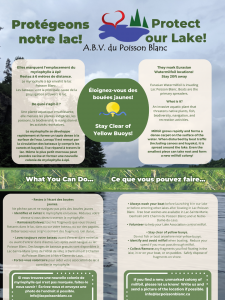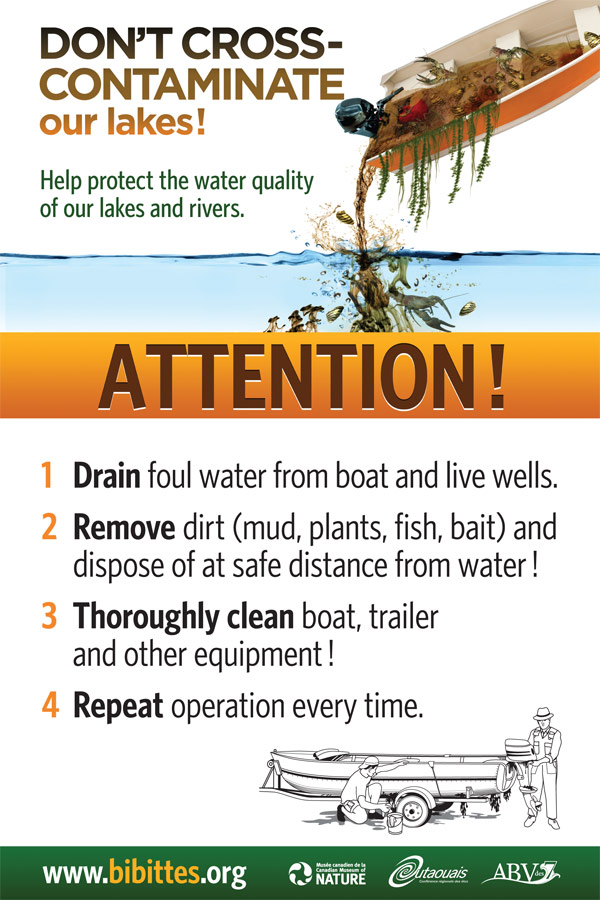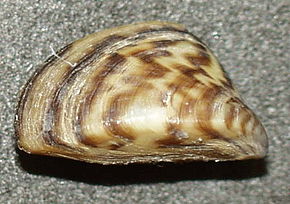Protect Our Lake!
Here is what you can do to help prevent the spread of Eurasian Milfoil …
Invasive Exotic Species: 5 Steps to protect your lake…
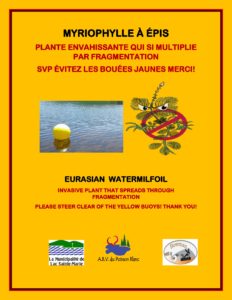
Sadly, Eurasian milfoil has been identified in Newton Bay and other parts of Lac Poisson Blanc, but measures are being taken to prevent it from spreading. The Association paid for a study to be done at Lac du Brochet and the southern portion of Lac Poisson Blanc.
French original study results:
English summary of this study (thank you Carla):
The beautiful nature of our lakes is a delicate balance of biodiversity that we humans have yet to fully understand. What happens when this balance is disrupted, or invaded by alien species? What can we do to protect our lake from nasty invaders? Prevention, fellow cottagers, is the best defence. Here’s how….
What is it?
The Eurasian water-milfoil (Myriophyllum spicatum) is an aquatic plant that can grow in different water bodies. They can survive in all conditions, but prefer shallow water rich in nutrients. Given its invasive nature, this exotic plant is a nuisance to and detrimental for our waterways.
The Eurasian water-milfoil is hardy and spreads through cuttings, root suckers or seeds, rapidly covering large areas of the lake. The pieces that fall off or are torn from the plant develop their own roots and may quickly establish themselves wherever the current takes them. They can survive without water for several days and displace existing plants requiring similar sites and nutrition. Once established, it is very difficult to eradicate. There are no miracle solutions but it is important to control its spreading and avoid conditions that would contribute to its growth and development.
Source: Crow and Hellquist, 2000
Environment Canada explains that it can “causes significant ecological, economical and environmental damage”. Like human invaders, these alien species:
- Displace native species and compete with them for resources
- Degrade habitat
- Introduce disease
- Breed with native species to form hybrids
Think Eurasian milfoil, toxic blue green algae, Asian carp, wild parsnip and emerald ash borer – that’s just the tip of the iceberg.
Once they arrive, it is extremely difficult, if not impossible, and expensive to get rid of them.
Is far-reaching. Not only is the native biodiversity forever disrupted, including the complete loss of some native species, we humans are affected too. Some invasive species, toxic blue algae, wild parsnip and giant hogweed, are toxic and harmful. Others change our landscapes; the emerald ash borer is decimating the native ash trees in our forests. And in our ‘lakescapes’ Eurasian milfoil is blanketing shallow lake beds, making it a nasty experience for swimming, fishing, and boating.
What Can We Do?
As much as we can to prevent the species from arriving in the first place! Most invasive species hitch a ride to their new conquest: on watercraft, boat trailers, in firewood, transplanted plants and soil, fishing gear and bait, and even on your clothes, alien plant seeds and parts, bugs and fish can find their way to our lake.
Yet another invasive species… ***Rusty crayfish*** are now found in the Ottawa River and Lac Pémichangan in the Lac Sainte Marie municipality. Something else we have to be aware of 😕. News report in french:
click here for the news report
HOW TO PREVENT the introduction and spread of invasive species on our waterways?
- Stay clear of yellow buoys
- Carefully inspect all watercraft including kayaks, canoes, paddles, life jackets, water toys and boat trailers for plant parts – including your guests’ items
- Rinse all watercraft and boat trailers with hot water (40C) and dry completely before putting in the water
- Do not dump fish bait in the lake
- Keep the phosphorous low in the lake to prevent rapid plant growth; use only eco-certified household products, NO fertilizers, don’t dump ashes in the lake and maintain a native plant shoreline buffer
- Minimize your wake which helps some species propagate.
Being able to identify plants you come across is an excellent skill. Not only can it help you avoid unsafe species, it also gives you an appreciation for the huge variety of aquatics plants. Report any sightings of invasive species to your municipality.
Video which explains in five easy and effective steps to clean up fishing boats and recreational crafts: click here
Want to know more about invasive species in our lake? Click here: Dont-give-a-ride-to-intruders
DO NOT CUT EURASIAN MILFOIL – it will multiply!
Contact us for information on safe methods to remove it.
What’s the difference between Eurasian milfoil and local milfoil?
Eurasian milfoil resembles native milfoil (Myriophyllum sibiricum). Unlike the Eurasian variety, native milfoil offers shade, shelter and foraging opportunities for fish. There are several distinguishing characteristics that can be used to differentiate between the two species; please see graphic for the details.
| Invasive Eurasian Milfoil | Native Northern Milfoil |
|
|
To learn more about the invasive Eurasian milfoil, click here
THE ZEBRA MUSSEL:
They are already present in the Ottawa and Gatineau rivers:
Background
Zebra are freshwater bivalves native to the Black Sea region of Eurasia. Both species were believed to have been introduced in the late 1980’s by ballast water from transoceanic ships carrying veligers (larvae), juveniles or adult mussels. Zebra mussels are capable of heavily colonizing hard and soft surfaces, including, docks, boats, break walls and beaches. These colonization are also responsible for clogging intake structures in power stations and water treatment plants.
Range
Zebra mussels are found throughout all the Great Lakes. They have also been found in the St. Lawrence River and some local rivers.
Impacts of Zebra Mussels
- Zebra mussels filter water to the point where food sources such as plankton are removed, altering food webs. This also causes clearer water, allowing sunlight to penetrate deeper, increasing growth of aquatic vegetation.
- Impact fish and wildlife by increasing toxic algal blooms.
- Large colonies affect spawning areas, potentially impacting the survival of fish eggs.
- Affects recreational activities by cutting swimmers feet as a result of their sharp shell.
What You Can Do
- Learn how to identify zebra and how to prevent accidentally spreading these invasive species.
- Inspect your boat, trailer and equipment after each use. Remove all plants, animals and mud before moving to a new water body.
- Drain water from motor, live well, bilge and transom wells while on land.
- Rinse all recreational equipment with high pressure (>250 psi), hot water (50°C / 122°F) OR let it dry in the sun for at least 5 days.
THE ASIAN CARP:
Asian carps were brought from Asia to North America in the 1960’s and 70’s. Since then they have migrated north through U.S. towards the Great Lakes. The Asian Carp is coming our way. Presently they are naturally blocked by our hydro dams.
Concerning the its presence here: In our lake? No
How fisherman can help:
- Don’t dump your bait! Always put unwanted bait fish in the garbage and empty bait bucket water on dry land. It is illegal to dump the contents of any bait container into the water or within 30 metres of any lake, pond, river or stream.
- Make sure you check your bait. As an angler, you are responsible for making sure you only possess species that may legally be used as bait – even if the bait came from a bait dealer. See Fishing.
- Learn to identify Asian carps. Don’t confuse young Asian carps with common species.
For more information:
- Invasive species in Ontario
- Ontario’s invading species awareness program
- Great Lakes Fishery Commission – Asian carp
- Fisheries and Oceans Canada – Centre of Expertise for Aquatic Risk Assessment
THE JELLYFISH:
Concerning the its presence here:
In our lake? No but …
Regarding the presence of jelly fish in some rivers in our region (in french) : Méduses – 2016
TICKS:
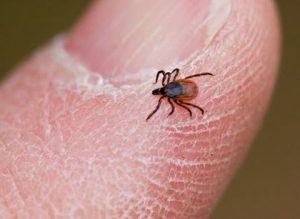
Want to know more about them and how to remove them, click here: http://etick.ca/en/
From other organizations:
From COBALI, the Regroupement and other associations
VARIOUS SUBJECTS (POWERPOINT): Capsules ANG
Survey done by Ontario cottage associations: report overview-boats
CLIMATIC EMERGENCY:
12 most used arguments about CLIMATIC CHANGE: click here
COMPOSTING:
Composting: Dépliant COMPOST-bilingual
FIREWORKS:
Consequences for the lake environment, (in french): click here
DANGEROUS PLANTS:
Here are a few tips to help prevent to spread of them:
- Stay on trails and away from areas known to have these plants;
- Carefully inspect, clean and safely remove any plant parts and seeds from your clothing, shoes, pets, lawn and garden equipment and even your vehicle, ATV and bicycle tires;
- Safely clean garden and lawn equipment before moving them to another area;
- Discard yard waste properly and NOT in natural areas;
- Avoid disturbing soil, removing plants from or bringing plants to natural areas;
- Do not transport cut wood or firewood.
Being able to identify plants you come across is an excellent skill. Not only can it help you avoid unsafe species, it also gives you all sorts of appreciation for the huge variety of flowers, trees, grasses and bushes you might not otherwise notice. Report any sightings of invasive species to your municipalities
Original author: Tony Xu
You’ve packed everything on your hiking checklist, and have reviewed maps for the area you’re going to explore. All ready to go? Almost. If you’re headed for back country travel in Canada, you’ll encounter all sorts of plants, some of which are beautiful to look at but can be highly dangerous to touch.
Stay safe – and rash-free – on your hiking or camping trip by keeping an eye out for these five plants you might come across in the wild:
POISON IVY

Poison ivy is most common in southern Ontario and Quebec, although it can be found in every Canadian province with the exception of Newfoundland. The plant grows as a vine or a shrub along rivers, lakes, meadows, forest openings and beaches.
The leaves change colour throughout the seasons. During the summer, poison ivy is a shiny green, making it easy to blend in with other plants. A simple way to identify poison ivy is to remember the phrase, “Leaves of three? Let it be.”
Avoid it because: Urushiol, a liquid in the plant’s sap, creates a skin rash on anyone who touches the plant.
GIANT HOG WEED:

Present across the country – giant hogweed is a firm, bright green plant that grows in ditches and open woodlands, alongside streams, and in other areas with moist soil.
Typically 2–5m in height, the plant has large leaves with serrated edges and a hollow leaf stalk with dark red spots and prickly hair. Giant hog weed also produces an umbrella-like top that contains small, white flowers.
Avoid it because: The chemicals in giant hog weed make skin sensitive to sunlight after contact and can cause large burns and blisters (along with a visit to the doctor).
STINGING NETTLE:

They typically grows in damp areas like marshes, meadows, pastures and ditches.
Stinging nettle, which grows 1m or more in height, can be identified by clusters of fuzzy white flowers and serrated leaves. These plants have sharp, thin hairs, which operate like hollow hypodermic needles and allow toxins into the skin upon contact.
Avoid it because: Contact with the plant causes itching, numbness and swelling, leading to a painful rash.
CANADIAN MOON SEED:

They appear beside streams and along bluffs. It grows as a climbing vine, up to 6m in height.
Canada Moon Seed has green leaves – containing 3–7 lobes each – and purple-black berries, which some people have unfortunately mistaken for wild grapes. (Canada Moon Seed has crescent moon-shaped seeds, while grapes contain round seeds.)
Avoid it because: Ingesting Canada moonseed berries is bad news – they lead to convulsions, seizures and possibly death.
WATER HEMLOCK:

One of the most deadly plants they can be seen near marshes, pastures, rivers and streams.
The plant can grow up to 1–2m in height, and has a hollow, branching stem with a spotted purple pattern. It produces white flowers clustered together in the shape of an umbrella. It’s occasionally mistaken for edible roots such as wild parsnip; pick up a plant field guide to learn how to distinguish the difference.
Avoid it because: Water hemlock is fatal if ingested. It contains cicutoxin, an extremely toxic chemical that can disrupt the central nervous system. If you see someone accidentally consume this plant, treat it as a life-threatening situation and seek emergency medical help immediately – it’s serious and can cause death within as little as 15 minutes.
Use a plant field guide to get familiar with the local species you may encounter as you venture through the local lush wilderness.
Photo credits: John (Flickr), debs-eye (Flickr), John Neon, “Moonseed fruit 1” by Nadiatalent is licensed under CC BY-SA 4.0, Wendell Smith
You can find other information on this invasive plant: HERE

